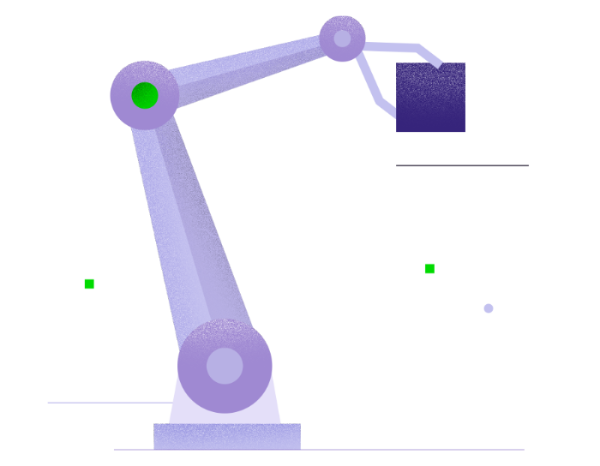WHAT STARTED THE 4TH INDUSTRIAL REVOLUTION AND WHAT IS IT?
The internet has redefined several consumer-oriented businesses such as media, travel, retail, and finance. It is now redefining industries like energy, manufacturing, transportation, and healthcare. This new wave is the Industrial Internet of Things (IIoT): an internet of things, machines, computers, and people, enabling intelligent industrial operations using advanced data analytics for transformational business outcomes.
A distinguishing aspect of digital transformation in industry, as opposed to digital transformation for consumers and in wider business, is the convergence of Information Technology (IT) and Operational Technology (OT). In digital transformation in industry, the innovative use of sensor-driven data and data-driven actuators affect people, business, operation, and the physical environment and empower the creation of better business outcomes. Digital transformation in industry leverages connected things to transform processes and operations to produce better outcomes.WHAT ARE THE NEW TECHNOLOGIES OF INDUSTRY 4.0?
Industry 4.0 envelops many technologies and is used in a variety of different contexts. There are five pieces that define Industry 4.0 at its core. Each piece is similar in nature but, when integrated together, create capabilities that never have been possible before. The following five terms contribute to the next industrial revolution:
BIG DATA
Big Data is a collection of data from traditional and digital sources inside and outside your company that represent a source for ongoing discovery and analysis. Today data is collected from systems, sensors to mobile devices. The challenge for Industry 4.0 is the development of methods to best interpret data and to transform this data into usable models. Once this step is taken, organizations will be able to make better, smarter decisions.
SMART FACTORY
The concept of Smart Factory is the seamless connection of individual production steps, from planning stages to actuators in the field. Soon, machinery and equipment will be able to improve processes through self-optimization; systems will autonomously adapt to the traffic profile and network environment.
CYBER PHYSICAL SYSTEMS
Cyber physical systems are integrations of computation, networking, and physical processes. Computers and networks monitor and control physical processes with feedback loops; the physical system reacts; the system uses software to interpret actions and tracks results. The notion centers on computers and software being embedded in devices where the first use is not computation; rather it is a loop of action and machine learning.
INTEROPERABILITY
Interoperability is in essence what happens when we bring the above elements together. It is the connection of cyber-physical systems, humans and smart factories communicating with each other through the IoT. In doing so, manufacturing partners can effectively share information, error-free. Consider that no single company can dictate all its partners to use the same software or standards for how to represent the information. Interoperability enables error-free transmission and translation.
COMPONENTS OF INDUSTRY 4.0 ARCHITECTURE
The new technologies translate into new components that are needed for the digital transformation in Industry 4.0. The main components of Industry 4.0 are:
IIOT EDGE DEVICES
Edge computing is when data is analyzed on devices, that is, at the edge of the network. With edge computing, you can avoid transferring raw data by carrying out data treatment and analysis on the device itself, and then send the insights centrally. This will result in reduced bandwidth costs, quicker response times and reduced traffic.
HIGH-SPEED WIRELESS PROTOCOLS
As more and more data are produced and needs to be analyzed, there are two options; 1. bring computing power to the devices, which is edge computing or 2. transport the data to the computing power. New types of communication are required to transport high volumes of data over wireless media to bring the data to the computing power and certainly to the cloud. 5G is the technology that will make wireless transfers fast, as fast as cabled networks. This new communication means will support high-speed and bandwidth IIoT.
IIOT GATEWAYS
The IIoT gateway is typically a hardware device housing application software that performs essential tasks. At its most basic level, the gateway facilitates the connections between different data sources and destinations.
The communication link between the field and the Datacenter/Cloud and can also offer local processing and storage capabilities to provide offline services and if required real-time control over the devices in the field. Used for main tasks:- Device Management: manage information of connected devices with IoT gateway like the type of sensors, devices, devices
- Data Management: field device continues to generate data and send it to the IoT gateway. Data is stored in local storage.
- Monitoring real-time data and display data in the local monitor system.
IIOT PLATFORM
The last component that you need is a platform to bring your information together and to analyse your data. IIoT platforms work as a central unit in the IIoT architecture. Sync them with the IIoT gateways to provide Analytics, Monitoring, User security and Privacy. The functional features that you might expect from a platform are:
- Communication: the IIoT platform may support one or more protocols for communicating with IIoT gateways. The platform must also be able to communicate with the OPC UA gateways to control devices.
- Data Transformation: is used to generate data for client applications by applying logic to data received by IIoT gateways.
- Data Storage: some of the most important considerations are scalability, ability to ingest data at sufficient rates, schema flexibility, integration with analytics tools and costs.
- Monitoring and Analytics: this function provides capabilities for monitoring large numbers of IIoT devices and is enriched with AI models to analyse data and create useful information.
CONCLUSION
With the above components, you are set to go for Industry 4.0 applications. These technologies are the basic building blocks to create an Industry 4.0 solution. Based on your requirements and the data that you have available we can help build your solution.


